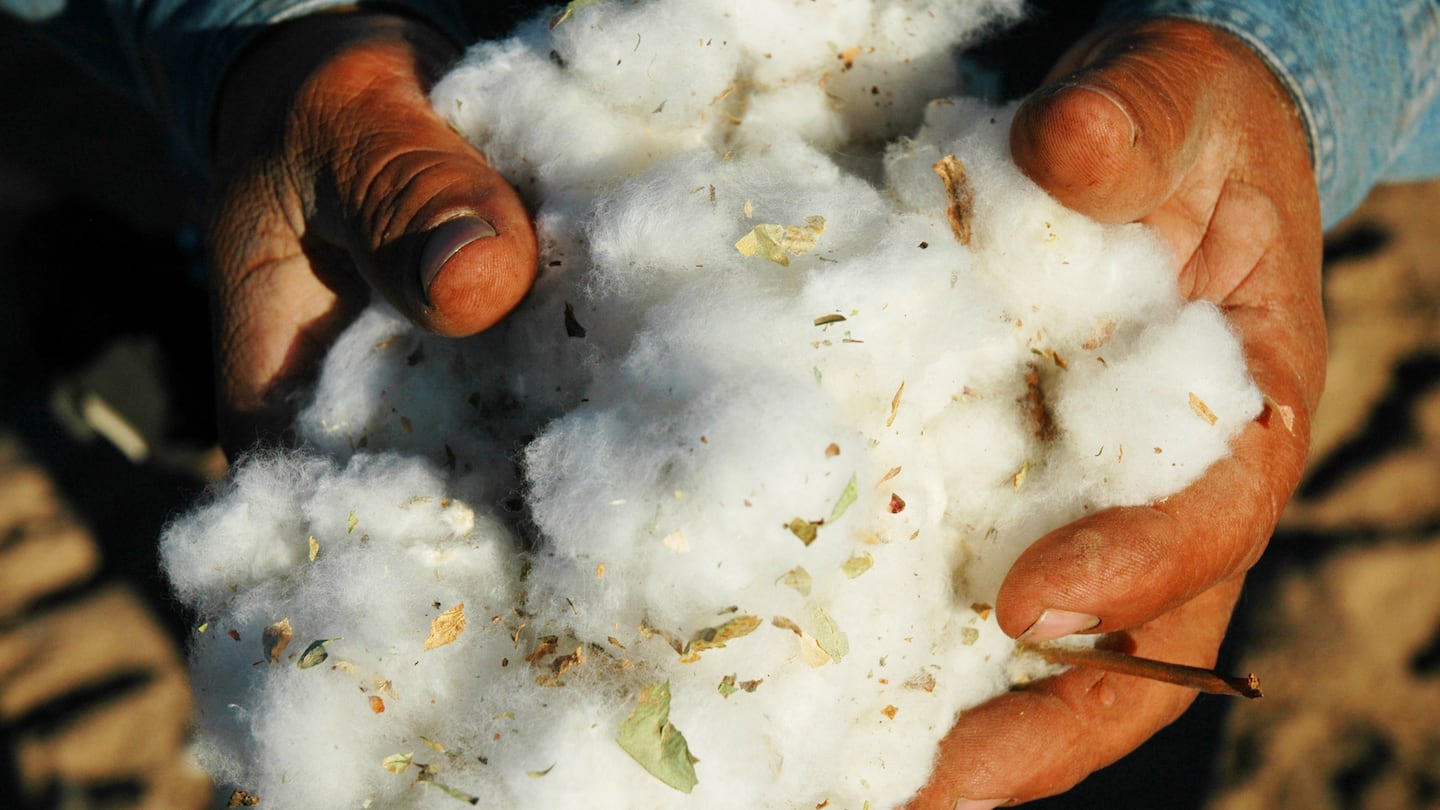
The Business of Fashion
Agenda-setting intelligence, analysis and advice for the global fashion community.

Agenda-setting intelligence, analysis and advice for the global fashion community.

Traces of banned Chinese cotton were found in 19 percent of a sample of merchandise selling at US and global retailers in the past year, a study showed, highlighting the challenges of complying with the US law aimed at blocking imports of cotton linked to forced labour in China.
In the study released on Tuesday, researchers from natural resource analytics, isotope testing firm Stratum Reservoir and DNA lab Applied DNA Sciences analysed garment samples, cotton swabs and shoes from big box retailers and e-commerce platforms. The firms declined to name the retailers whose merchandise they tested.
The scientists used isotopic testing, which can link cotton to specific geographic areas by analysing the concentration of stable elements like carbon and hydrogen present in both the crop and the environment in which it has been grown, experts say. They tested the merchandise for traces of cotton from Xinjiang, the far western region of China.
The US enacted a law in 2021 to safeguard its market from products potentially tainted by human rights abuses in Xinjiang, where the US government says China is committing genocide against Uyghur Muslims.
ADVERTISEMENT
China denies abuses in Xinjiang, a major cotton producer that also supplies much of the world’s materials for solar panels.
For years, lawmakers and trade organisations have been trying to keep product made with forced labour out of the US supply chain. But the study shows that the new law is not necessarily effective.
A federal report published in 2022 estimated that cotton from Xinjiang accounted for roughly 87 percent of China’s production and 23 percent of the global supply in 2020 and 2021. Countries including Vietnam, Cambodia and Bangladesh - some of the world’s largest producers of cotton clothing and consumer goods - still import large quantities of finished fabric from China. It then often makes its way to the US in the form of apparel made by suppliers in those countries, according to the report.
Of the 822 products tested, 19 percent had traces of Xinjiang cotton, the researchers said. The study tested a sample of items from February 2023 through March 2024. Of the items that tested positive for Xinjiang cotton, 57 percent featured labels that claimed the origin of the merchandise was US-only, the researchers said. Of the items that tested positive for Xinjiang cotton, two- thirds showed that the cotton had been blended with cotton and materials from regions outside of Xinjiang, they said.
One of the two firms, Applied DNA Sciences, declined to comment on which brands and retailers it analysed. It said that it purchased goods within the US and from e-commerce brands that ship to the country.
By Arriana McLymore; Editing by Marguerita Choy
New policies on both sides of the Atlantic mean businesses will likely have to prove their supply chains do not pass through the Chinese region, where the reported detention of Uighurs in forced labour camps is rife.
Swiss-based sustainability group Better Cotton said on Thursday it has added new functions to a platform that big retailers use to trace materials through their supply chains.
This week, everyone will be talking about the debate over Xinjiang cotton, Shanghai Fashion Week and what the collections shown at New York’s bridal fashion week mean for wedding trends.
The sector’s planet-warming emissions inched lower in 2022 thanks to revised data, but they’re still on track to grow by more than 40 percent by 2030, according to a new report.
Textile-to-textile recycling technologies could be a climate game changer for fashion’s environmental footprint. But like renewable energy, they need state support for market efforts to scale, argues Nicole Rycroft.
More than a year after the ultra-fast-fashion company said it would tackle issues of unlawful overtime, 75-hour weeks remain common in its supply chain, Swiss watchdog Public Eye found.
A study published this week found traces of cotton from Xinjiang in nearly a fifth of the products it examined, highlighting the challenges brands face in policing their supply chains even as requirements to do so spread to raw materials from diamonds to leather and palm oil.